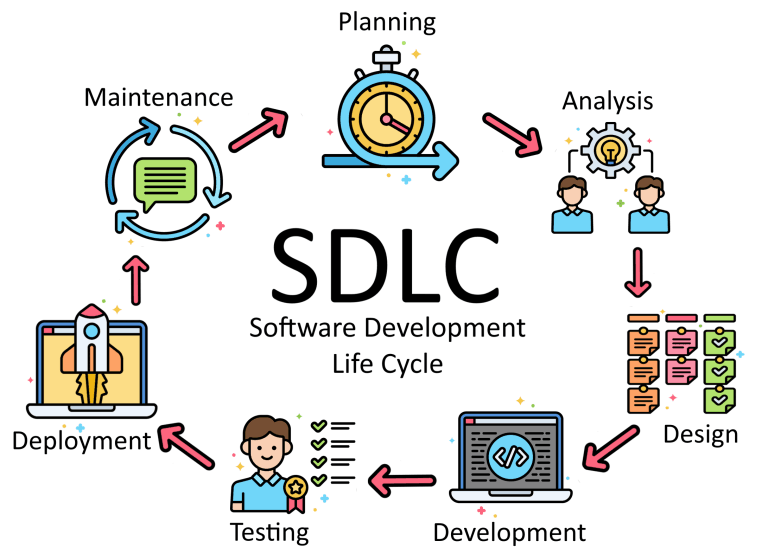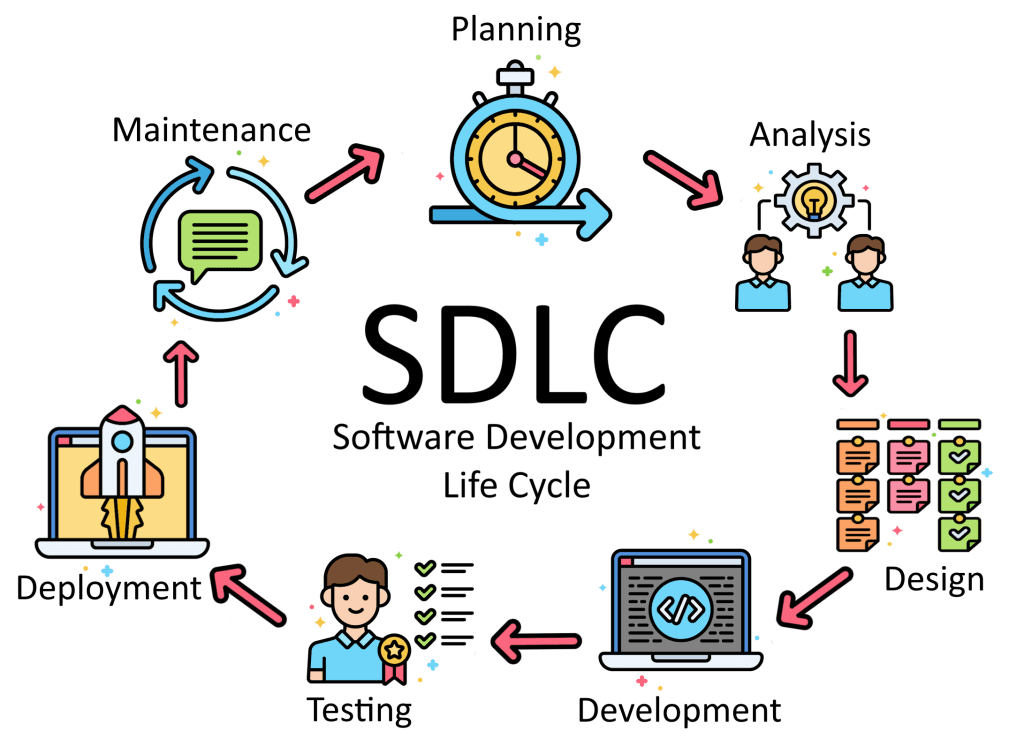Introduction to SDLC
The Software Development Life Cycle (SDLC) is a structured process that guides software development through clear phases. By following the phases of SDLC, developers can plan, build, test, and deploy software in a systematic way. This ensures the final product is high-quality and meets the specific needs of the business.
In custom software projects, following the phases of the SDLC is crucial. It provides step-by-step guidance, helping developers stay on track from the initial planning phase through to ongoing support and maintenance. This structured approach ensures that the team builds the software efficiently, meets user requirements, and stays within budget.
Benefits of SDLC for Custom Software Development
Tailored Solutions
Using the Software Development Life Cycle (SDLC), we can craft software that perfectly suits your needs. Unlike off-the-shelf software, custom solutions are designed specifically for your business. This means they can tackle your unique challenges and requirements, leading to better performance and satisfaction. Tailored solutions help ensure you get exactly what you want from your software.
Increased Transparency
The phases of the SDLC promotes clear communication among everyone involved in the software development process. It keeps clients and developers informed about progress and any changes. With regular updates and feedback, everyone stays on the same page, which reduces confusion and misunderstandings. This transparency builds trust and encourages better teamwork throughout the project.
Enhanced Planning
Effective planning is vital for any project, and the SDLC helps make this easier. It allows teams to set clear timelines, allocate resources wisely, and spot potential risks early. By carefully outlining each stage of development, teams can ensure deadlines are met and any issues are dealt with quickly.
Minimised Errors
One of the main benefits of following the SDLC is that it helps reduce errors during software development. The structured approach includes thorough testing at each stage, which catches mistakes before they become bigger problems. This careful attention to detail results in a more reliable final product. Moreover, a well-developed system is easier to maintain over time, saving you both time and money in the long run.
Stakeholder Involvement
In any software project, stakeholders play an essential role in making sure the software meets the business’s needs. A stakeholder is anyone who has an interest in the project, such as the business client, end-users, project managers, developers, and designers. The business client is often the main stakeholder, as they will use the software to solve specific problems or improve processes.
It is important to involve all stakeholders throughout the entire Software Development Life Cycle. By engaging them early and regularly, developers can gain a better understanding of what the business needs from the software. This ensures that the final product is useful and relevant.
Why Business Clients Are Key Stakeholders in SDLC for Custom Software Projects
In a custom software project, the business client is one of the most important stakeholders. As the main stakeholder, they provide the vision and purpose for the software. The client typically represents the business or organisation that will use the software, and their role is to ensure that the software addresses their specific needs and solves the problems they face. Without their input, the development team wouldn’t have a clear understanding of what the business really requires.
The business client participates in all phases of the SDLC, from planning and defining requirements to testing and deployment. They help to clarify the goals of the project, approve designs, and give feedback on early prototypes. This continuous involvement allows the team to tailor the software to meet the business’s unique processes and objectives.
Phases of the SDLC – Software Development Life Cycle
First Phase of the SDLC – Planning

In the planning phase, the team establishes the project’s goals and determines the scope of the software. They create a timeline with deadlines, along with a budget and resource allocation. This phase is crucial for custom software, as it helps to identify the unique requirements of the business. Understanding these needs allows for the development of a clear path for the project.
Second Phase of the SDLC – Requirements Analysis
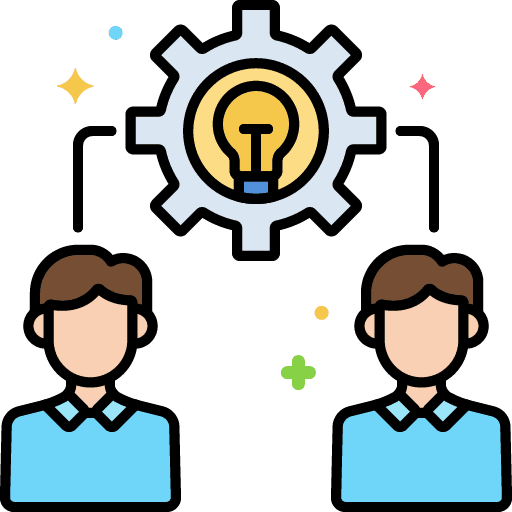
During the requirements analysis phase, the team gathers detailed information about what users expect from the software. This is typically done through interviews and surveys to collect genuine feedback. A Requirements Specification Document can be created, outlining all the gathered information. This phase ensures that the software will include the specific features necessary, making it truly customised.
Third Phase of the SDLC – Design
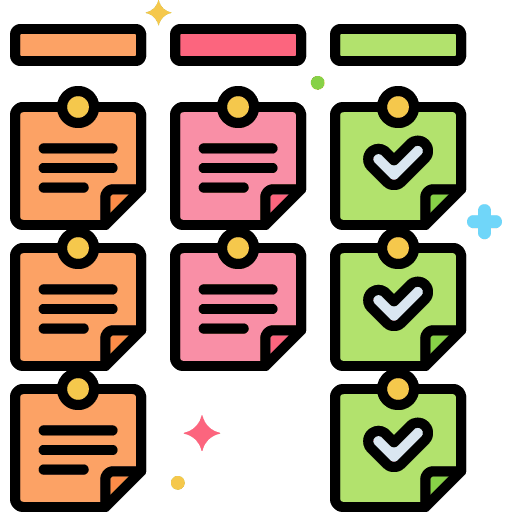
In the design phase, the software’s architecture is developed. This includes creating diagrams that illustrate how data will flow and mock-ups of the user interface. A Software Design Document (SDD) can also be produced to detail these designs. For custom software, this phase focuses on specific design elements, ensuring that all components work seamlessly together.
Fourth Phase of the SDLC – Development

During the development phase, the actual code for the software is written. Code reviews and internal testing are important at this stage to ensure that everything is functioning correctly. This phase is vital for custom software, as it implements unique specifications.
Fifth Phase of the SDLC – Testing

In the testing phase, the team conducts thorough checks to identify any bugs or issues within the software. Various types of tests, including unit testing, security testing, and integration testing, are utilised to confirm that everything is working properly. This phase ensures that the software integrates effectively and functions as intended, providing peace of mind.
Sixth Phase of the SDLC – Deployment

The deployment phase involves launching the software to the end-users. It is also important to provide user training and to ensure that the new software works well with any existing systems. This phase is essential for custom software, as it helps users adapt to the new tools effectively.
Seventh Phase of the SDLC – Maintenance

In the maintenance phase, ongoing support and updates are provided for the software. Addressing user feedback and making regular updates is essential to keep the software running smoothly. For custom software, this phase is crucial as it allows for adaptations to changing business needs, ensuring that the software remains relevant and effective.
Most Common SDLC Models
In software development, there are several models we can use to guide the process. Three of the most common models include Agile, Waterfall, and Spiral. The phases of the SDLC may vary slightly in each model, as well as the number of repetitions and when they happen.
- Agile: This model focuses on flexibility and collaboration. It breaks the project into small parts called sprints, allowing teams to adapt quickly to changes and new requirements. Agile is great for custom software because it lets developers and clients work closely together throughout the project.
- Waterfall: This model follows a strict, step-by-step approach. Each phase must be completed before moving on to the next, which makes it easy to manage but less flexible. Waterfall suits projects with clear requirements and minimal need for changes, but it may not fit complex custom software well.
- Spiral: The spiral model combines elements of both Agile and Waterfall. It involves repeating cycles (or spirals) of planning, development, and testing. This model is useful for complex projects, as it allows for regular assessments and adjustments based on user feedback.
There are differences in how changes are handled between Agile and Waterfall methodologies. In Agile, changes can be made quickly and often, as the project is divided into smaller parts called sprints.This flexibility allows for adjustments based on user feedback and changing needs. In contrast, the Waterfall model follows a more structured approach, requiring the completion of each phase before moving on to the next. This makes it harder to implement changes once a phase is finished, but it can provide a clearer overall plan.
Why Choose BSPOKE Software for Your Custom Project
At BSPOKE Software, we have over 15 years of experience in custom software development. Our team is dedicated to creating solutions that meet your specific needs and drive your business growth. We pride ourselves on delivering high-quality software that is tailored to your requirements.
Expertise in Various Platforms and Industries
Extensive expertise is available in developing software for desktop, mobile, and web portals. This allows for the creation of solutions that work seamlessly across different devices, making it easy for users to access the software they need, no matter where they are.
The knowledge of different platforms enables the development of versatile and user-friendly applications suitable for various industries, with a strong emphasis on manufacturing. For example, custom software can help manufacturing companies manage production schedules, track inventory, and monitor equipment performance. Additionally, solutions can be tailored for other industries, such as healthcare, finance, and hospitality, ensuring that each sector gets the specific tools needed to improve efficiency and productivity.
Collaborative Approach with Clients
We believe in a collaborative approach to software development. By working closely with our clients, we create project plans that reflect your vision and goals. Our focus is on delivering a cost-effective solution by starting with a core system. Using the Agile method, we charge on an hourly basis and prioritise essential features so you can begin using the software sooner. We can add additional features as needed, allowing your software to grow with your business. This flexible approach ensures the development process is both efficient and adaptable to your evolving needs.
Ready to bring your custom software project to life? Contact us today to discuss your ideas and see how BSPOKE Software can help you achieve your goals. Let’s work together to create a solution that works for you!
Real-World Example
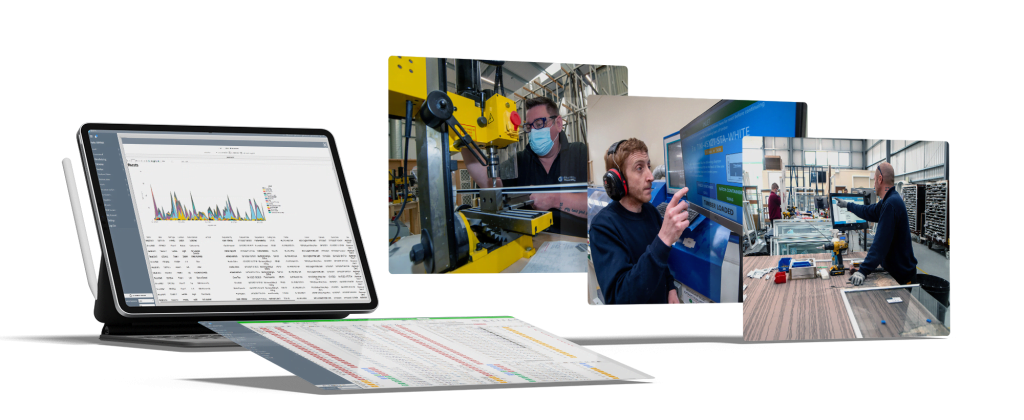
Our ongoing partnership with Granada Glazing, a company that specialises in secondary glazing, is a great example of how we use the Software Development Life Cycle (SDLC) for custom software projects. We began working with them at the end of 2015. Initially, we created the core system, which allowed them to quickly access key features like order management, stock control, and integration with Sage for accounting. As the project developed, we added more features, including delivery tracking, design tools, and functions to operate and monitor machinery. Since then, we’ve introduced many additional features, too numerous to list. The system continues to evolve, helping the business adopt new technologies, comply with regulations, and stay competitive.

Here are a few examples of key features:
- A 24/7 monitoring system provides continuous oversight and peace of mind.
- Strict validation rules help maintain data integrity and reduce errors.
- Client information access is controlled to enhance security and transparency.
- Order changes are instantly updated in the factory, ensuring everyone stays informed.
- Third-party API integration with Sage ensures smooth financial transactions.
Final Thoughts on the Software Development Life Cycle and Custom Software
Following the structured phases of the SDLC is essential for achieving successful outcomes for a software project. A clear process allows for careful planning, regular testing, and the ability to make adjustments based on user feedback.
Custom software solutions offer many advantages for businesses. They tailor solutions specifically to meet unique needs, which helps improve efficiency and productivity. With custom software, organisations can ensure that their systems are designed to work the way they do, rather than adapting processes to fit a generic solution. This leads to better user satisfaction and can provide a competitive edge in the industry. Additionally, custom software supports digital transformation, allowing businesses to modernise their operations and take full advantage of new technologies.
If you’re considering custom software for your business, we encourage you to contact BSPOKE Software. Our team is here to help you with all your custom software needs. We invite you to discuss your project with us and start your journey through the software development lifecycle. Together, we can create a solution that fits your company perfectly!
